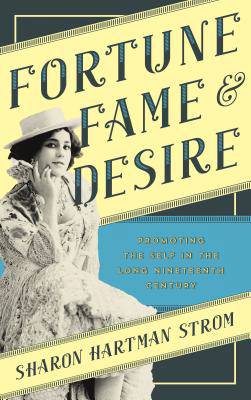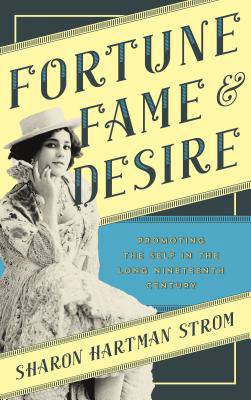
- Afhalen na 1 uur in een winkel met voorraad
- Gratis thuislevering in België vanaf € 30
- Ruim aanbod met 7 miljoen producten
- Afhalen na 1 uur in een winkel met voorraad
- Gratis thuislevering in België vanaf € 30
- Ruim aanbod met 7 miljoen producten
Zoeken
Fortune, Fame, and Desire
Promoting the Self in the Long Nineteenth Century
Sharon Hartman Strom
Hardcover | Engels
€ 196,95
+ 393 punten
Omschrijving
In the middle decades of the nineteenth century, a widening set of opportunities in the public sphere opened up for ambitious men and women in the loosely structured stratum of "the middle class." Much of the attention to the marketplace between 1820 and 1910 has described entrepreneurship and the beginnings of a more sophisticated economy, but not much has been paid to the commodification of the self. This book sets out to explore the promotion of the self in the rapidly growing economy and political flux of the nineteenth century. Its geography extends through New England, New York, the new states of the Midwest, and the great cities of the Mid-Atlantic, with an occasional trip to New Orleans, San Francisco and Los Angeles. The approach is biographical, using representative middle class figures to illuminate cultural and social history. Aided by more cheaply produced print and the clamor of the American public for entertainment both high and low brow, the figures described in this book strove for fame, sometimes achieved good fortune, and acted out desires for sexual pleasure, political success, and achieving the ideal in society. In doing so they questioned and rearranged the ideas of the early Republic. Poised between the dying class structure of the late eighteenth century and the rise of a more hierarchical one in the early twentieth, they took advantage of a society in flux to make their mark on American culture.
Specificaties
Betrokkenen
- Auteur(s):
- Uitgeverij:
Inhoud
- Aantal bladzijden:
- 260
- Taal:
- Engels
Eigenschappen
- Productcode (EAN):
- 9781442272651
- Verschijningsdatum:
- 19/09/2016
- Uitvoering:
- Hardcover
- Formaat:
- Genaaid
- Afmetingen:
- 160 mm x 234 mm
- Gewicht:
- 544 g

Alleen bij Standaard Boekhandel
+ 393 punten op je klantenkaart van Standaard Boekhandel
Beoordelingen
We publiceren alleen reviews die voldoen aan de voorwaarden voor reviews. Bekijk onze voorwaarden voor reviews.











